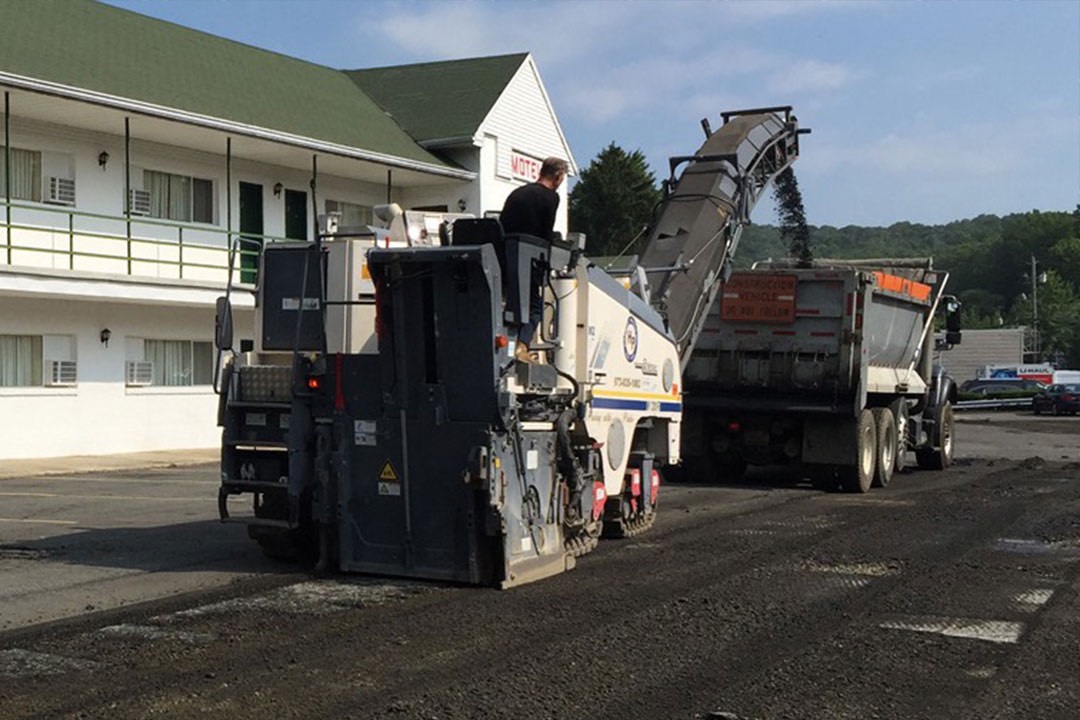In a previous blog, 3 Benefits And Signs You May Need An Asphalt Milling Job, asphalt milling, also known as pavement milling, cold planning, or profiling, was explored. Asphalt milling is the process of removing one or two inches or full depth of asphalt layers in need of repair, without going near to the sub-base. After the damaged pavement is removed, there is a leveling of the newly repaired surface with the older asphalt surface. It is a simple process to a professional paving firm, such as Haskell Paving, but to those unfamiliar with the pavement milling process, the questions are many. Haskell Paving appreciates an informed customer, and so we assembled the most common pavement milling FAQs and road resurfacing techniques.
How does asphalt pavement become damaged?
In our recent blog article, Parking Lot Damage Causes And Solutions, we explained how asphalt could become damaged by the extremes of cold or heat, poor drainage, or improperly compacted asphalt. Damaged pavement can also go deeper — to the sub-base of the road or parking lot surface.
What is the cost of resurfacing or milling a damaged pavement?
Cost is always the first question for any business owner or municipality. The actual cost is dependent on the extent of the damage, and the square feet of the area requiring resurfacing. Since all cases are unique, we recommend calling the service agents at Haskell Paving, who will assign an estimator to the site to give free consultation and price quote.
What are the typical pavement resurfacing and milling techniques?
Pavement resurfacing is an appropriate means to asphalt repair when the sub-base and layers of asphalt below the surface of the damaged asphalt are still in good condition. This is called overlay. Overlay resurfacing applies a new layer of asphalt over the existing layer to improve the surface profile and add strength. The other option for asphalt reconstruction is inlay resurfacing. The other option for asphalt reconstruction is inlay resurfacing. This technique requires pavement milling, commonly known as milling and paving. The inlay method is the standard on highways and city streets. One or two inches or full depth of asphalt layers is removed without going near to the sub-base foundation, new asphalt is installed and leveled off with the older section of roadway or parking lot. Parking lots can use the overlay or inlay method, depending on the condition of the existing lot.
Why is milling asphalt pavement important?
While utilizing pavement milling saves the time and expense of a complete asphalt reconstruction project, one of the major benefits for considering pavement milling is that it is an environmentally friendly procedure. Asphalt is America's number one recycled product! The old milled asphalt is removed to a recycling facility and used as a new aggregate in 'hot mix' asphalt.
How long does the pavement milling process take to complete?
The time it takes to complete the actual pavement milling will depend on the size of the area to be resurfaced and the extent of the damage. Modern milling machines, cutting drum, and a conveyer belt loads the milled asphalt to a waiting truck. It is a relatively quick operation, and after the asphalt is installed and leveled with the older road surface, the road is ready for traffic within hours.
How long does resurfaced or milled and paved asphalt last?
With proper surface maintenance and seal coating at least every two years, a milled and paved parking lot is, on average, good for another ten to twenty years. Milling and paving is the longest lasting option when compared to resurfacing.
If you still have questions about the safety and condition of your commercial parking lot, the experts at Haskell Paving are here to help! Contact us today for a quote.

